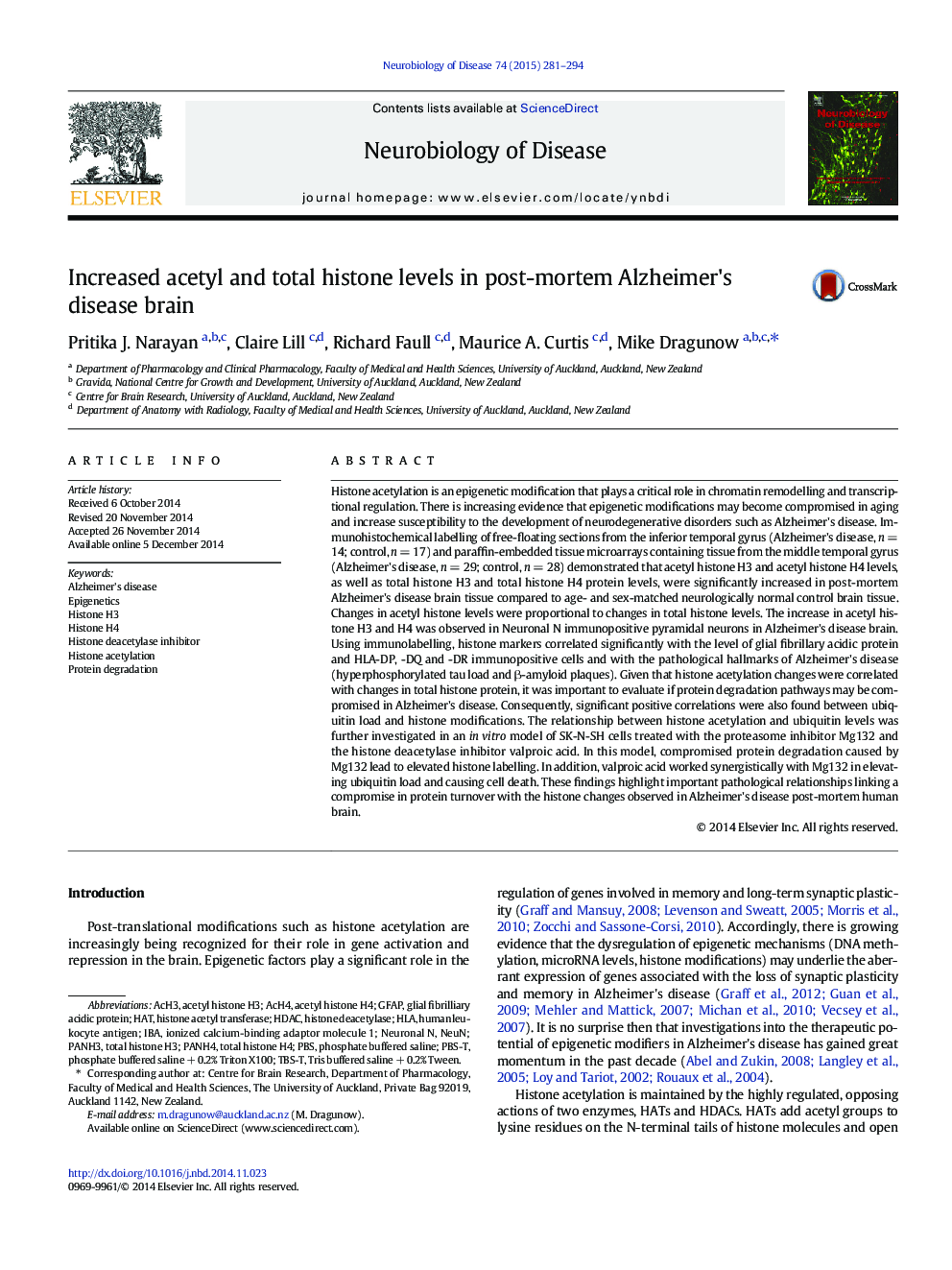| کد مقاله | کد نشریه | سال انتشار | مقاله انگلیسی | نسخه تمام متن |
|---|---|---|---|---|
| 6021773 | 1580649 | 2015 | 14 صفحه PDF | دانلود رایگان |
- Acetyl and total histone H3 and H4 levels are significantly increased in post-mortem AD brain.
- Histone changes correlated significantly with ubiquitin, amyloid and tau pathology.
- Histone changes colocalised with NeuN immunopositive cells and correlated with gliosis.
- Histone load may be related to compromised protein degradation pathways in AD.
Histone acetylation is an epigenetic modification that plays a critical role in chromatin remodelling and transcriptional regulation. There is increasing evidence that epigenetic modifications may become compromised in aging and increase susceptibility to the development of neurodegenerative disorders such as Alzheimer's disease. Immunohistochemical labelling of free-floating sections from the inferior temporal gyrus (Alzheimer's disease, n = 14; control, n = 17) and paraffin-embedded tissue microarrays containing tissue from the middle temporal gyrus (Alzheimer's disease, n = 29; control, n = 28) demonstrated that acetyl histone H3 and acetyl histone H4 levels, as well as total histone H3 and total histone H4 protein levels, were significantly increased in post-mortem Alzheimer's disease brain tissue compared to age- and sex-matched neurologically normal control brain tissue. Changes in acetyl histone levels were proportional to changes in total histone levels. The increase in acetyl histone H3 and H4 was observed in Neuronal N immunopositive pyramidal neurons in Alzheimer's disease brain. Using immunolabelling, histone markers correlated significantly with the level of glial fibrillary acidic protein and HLA-DP, -DQ and -DR immunopositive cells and with the pathological hallmarks of Alzheimer's disease (hyperphosphorylated tau load and β-amyloid plaques). Given that histone acetylation changes were correlated with changes in total histone protein, it was important to evaluate if protein degradation pathways may be compromised in Alzheimer's disease. Consequently, significant positive correlations were also found between ubiquitin load and histone modifications. The relationship between histone acetylation and ubiquitin levels was further investigated in an in vitro model of SK-N-SH cells treated with the proteasome inhibitor Mg132 and the histone deacetylase inhibitor valproic acid. In this model, compromised protein degradation caused by Mg132 lead to elevated histone labelling. In addition, valproic acid worked synergistically with Mg132 in elevating ubiquitin load and causing cell death. These findings highlight important pathological relationships linking a compromise in protein turnover with the histone changes observed in Alzheimer's disease post-mortem human brain.
Journal: Neurobiology of Disease - Volume 74, February 2015, Pages 281-294
